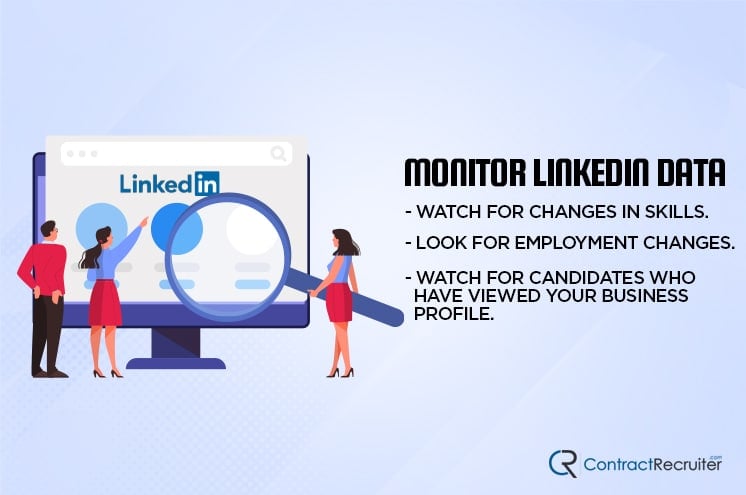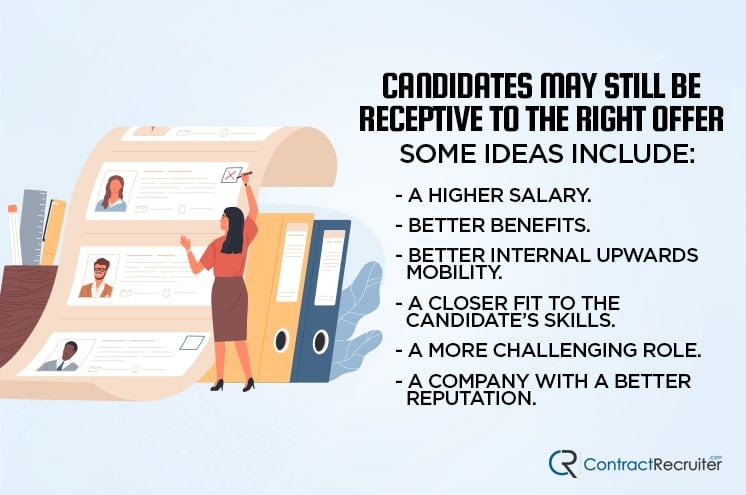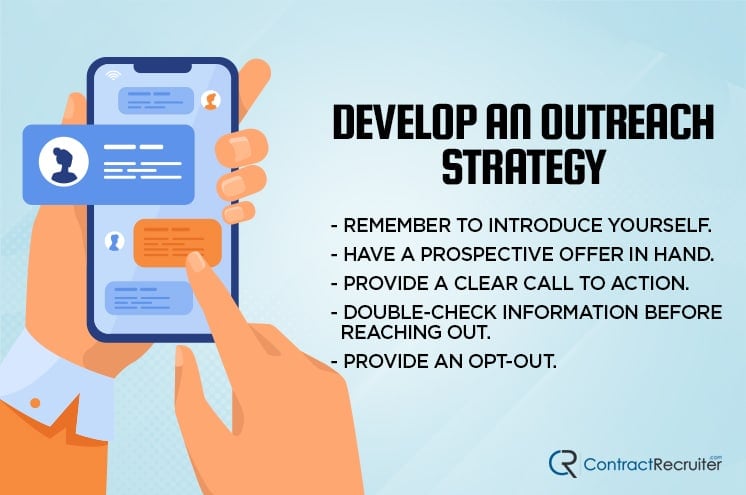Suppose you have been building up a candidate pool searching for the perfect person to fill an open role in your organization. You’ve spent several weeks at it so far, pulling in resumes and applications from a variety of different platforms. The people in your pool are actively looking for work, and you can filter them down into the most valuable, best matched, highest-skilled candidates for your shortlist.
You pick one, and you hire them. What do you do with the rest of the people on the list?
A good applicant tracking system will keep those candidate profiles on file in case you want to refer to them later. Maybe your chosen candidate rejects your job offer. Perhaps they accept your offer, work for a few months, and decide to leave. Perhaps they will get a better offer in six months. Regardless of why, suddenly, you’re left looking to fill the same position once again.
If you’ve kept your old candidate pool information around, you should be able to reach out and hire your next-best candidate, right? After all, those people were interested at one point; they should still be interested.
The Trouble of Data Degradation
Perhaps you reach out to the second-in-line candidate. They say no; they’ve already found a job at a different company and they aren’t interested in leaving so soon. You reach out to the next in line. They say no; they’ve moved out of state and aren’t interested in coming back. You reach out to the next, and they refuse as well. How far do you have to dig to find a candidate still willing to work for you?
Of course, the answer varies, but it can be very time-consuming to filter through your candidate list again. Situations change. Everyone in your candidate pool is active, building their skills, seeking other employment, earning certificates, and more. Some leave the job market, and others leave the industry completely.
The longer you go in between building a candidate pool and actively using it, the less valuable that pool will be. It’s just like marketing lists, email newsletter lists, and any other list of data that changes over time. New people are interested, old candidates drop out, and the people still on the list have changing interests and situations.
“The hiring process doesn’t start when there is a vacancy in the organization—it starts long before the vacancy opens. It is the mark of an able HR professional to arrange the structure of a human resources department so that there is ongoing talent acquisition—and for this, keeping a candidate database is crucial.” – Association for Talent Development.
Your job as an HR manager or hiring director is to implement practices to keep this candidate pool warm so that when you need to fill an open role, you have the data ready to go. There are many ways to do this, so we’ve developed five primary methods you can use.
1: Monitor LinkedIn Data
In many industries, the best platform to use for keeping on top of candidate data is LinkedIn. Billed as the professional network for businesses, brands, and job-seekers, LinkedIn is a vast resource, even if you don’t actively use it for recruiting.
LinkedIn data can be harvested by a modern ATS with integration ability, or you can choose specific pieces of data you want to watch, take notes, and check for changes when you need to refresh your information. The former is better, of course; automatically doing it saves work hours and money.
How can you use LinkedIn data to your advantage?
- Watch for changes in skills that might make a middling candidate into a more attractive proposition. Candidates who develop their skills actively are already a better choice, and those who pursue certifications or training in their careers are more attractive still.
- Look for employment changes. A great passive candidate might not be available for hire, but they may seek new opportunities if their employment status changes. This is a great time to approach them with a new offer.
- Watch for candidates who have viewed your business profile. LinkedIn offers business tools to companies willing to pay for them, and one of those tools allows you to see candidates who are viewing your profile. It can indicate that they’ll be more receptive to your outreach.
LinkedIn alone won’t keep your candidate pool warm or prevent data degradation. It will, however, provide you with convenient access to information as it changes and can give you indications of when outreach can be most effective.
2: Don’t Write Off Hired Candidates
Just because a candidate has changed their status from “seeking a job” to “employed” doesn’t mean they’re out of reach. Passive candidates can be some of the best people to recruit if you can reach out to them in the right way and give them the right offer.
“Keep in mind that passive job seekers are generally happy with their current job and will not be willing to leap into another job without serious consideration. This makes relationship-building a must when trying to engage passive job seekers.” – SHRM.
When you’re harvesting information to keep your candidate pool up to date, you might encounter top candidates who are no longer actively seeking work. Some of them may have decided to leave the job market and subsist on unemployment or a spouse’s income, but most have likely obtained employment in another way and are simply no longer looking.
These candidates may still be receptive to the right offer. You just need to determine how to reach them and what to offer them that their current position doesn’t. Some ideas include:
- A higher salary. Many candidates have money on the mind and will be willing to make significant changes to their careers to have a larger paycheck. If you can offer more than whoever they’re currently working for, you’ll do well to hook them.
- Better benefits. Whether you’re offering flexible hours, more time off, work from home or remote work benefits, better insurance coverage, or something else, benefits can make or break an offer and convince a passive candidate to jump ship.
- Better internal upwards mobility. An unfortunate fact is that modern businesses are limited in their mobility, which means candidates often need to change companies if they want to progress their careers. Candidates don’t like doing this – there’s a lot of uncertainty and change involved – so offering upward mobility can help foster loyalty and be a more attractive career option. No one likes working in a dead-end job.
- A closer fit to the candidate’s skills. Sometimes, desperation drives a candidate to accept a sub-par opportunity just to put food on the table. Even if they’re no longer actively seeking work, they may be more than happy to leave their current position in favor of one that better suits their skills and experience.
- A more challenging role. Some individuals like a challenge. They tend to work in a given role long enough to “solve” it, such that the unique challenges they encounter are no longer challenging. If you can present more unique and interesting work for these people, it can be very attractive for them.
- A company with a better reputation. Some candidates are concerned not just with the tangible benefits of a job; but with the company as a whole. They might not want to work with companies that have had poor reputations, and they may have discovered something about their current company they don’t like but don’t have the luxury of leaving without something else lined up.
If you’re dedicated to the idea of convincing a candidate to jump ship on their current employer and come to you, you also need to be aware of the loyalty challenge. These candidates are already demonstrating that they’re willing to leave their current role for a better offer. How can you keep them around? In simple terms, you need to continue to be the best offer available. This may or may not be possible for your company, particularly above a certain point, where pay, benefits, and mobility are capped by the nature of your business.
3: Develop an Outreach Strategy
Reconnecting with stale referrals or a cold candidate pool is extremely important, so you need to do it the right way.
Developing an outreach strategy is critical.
- Remember to introduce yourself. Candidates might not remember who you are or what your company does, especially if they’ve been applying to dozens or hundreds of opportunities.
- Have a prospective offer in hand. You don’t need to be ready to hire on the spot, but at least have an idea of what open role you might be recruiting them for and why you think they’ll be a good fit.
- Provide a clear call to action. If this candidate is interested, what should they do? An obvious link and directive to click and apply is the standard.
- Double-check information before reaching out. A candidate might not be as perfect a fit as you think, especially if they haven’t kept their information up-to-date. Do a double-check before reaching out to verify what you can first.
- Provide an opt-out. While it’s important to keep old candidates warm as prospects, you should ensure you’re not wasting your time. If an individual knows they’re no longer interested in what you have to offer, letting them remove themselves from your list saves you the time you would otherwise waste on targeting them.
Learning how to reach out to candidates properly is a crucial aspect of recruiting them. You can’t rely on form letters and general attempts at refreshing their interest; you need to be personalized. Let them know you’re reaching out to them, not just anyone with the right keyword in their social profile.
4: Stay in Active Communication
It always helps if you can stay in active communication with your best leads. Building an email list that keeps candidates appraised of open roles is usually a great idea. This list should be distinct from other mailing lists you may have (for marketing, for example) and should be actively culled to keep it as on-target as possible.
Bear in mind that the best candidates may only be on the market for a short time.
“The most qualified candidates are usually off the market in 10 days. An executive candidate, who’s more likely to be sourced or receive multiple offers, may be on the market for even fewer than 10 days.” – Workable.
An active candidate pool can turn into a pool of passive and disinterested candidates in less than two weeks. Often, your only way to reach these candidates is through regular communications, keeping the idea of your business warm for them.
5: Take Extensive Notes in Your ATS
How do you keep track of everything we’ve listed above? Notes. A modern applicant tracking system will have features to help keep data up to date, but there’s only so much that these systems can track on their own. They can monitor data feeds like LinkedIn, and they can respond to requests to remove a user from a list, but there will always be a need for the human element to keep some data up to date.
Taking notes is generally the best way to keep information refined and updated. These notes can include anything from general information your hiring manager deems worth noting down to specific notes and comments from an interview. The key is to keep the notes on hand and keep them as updated as possible.
Make no mistake; keeping your candidate pools alive for more than a few months can be a significant challenge, and keeping them alive for a year or more is extremely difficult. It requires a lot of active data refining, list culling, and communications. When done properly, you can significantly reduce the time to hire a new individual to fill a role, so it’s well worth the time and effort.
Have any questions regarding reconnecting with candidates, managing stale data, or anything similar? Feel free to reach out at any time, and we’ll be glad to get a conversation going!






